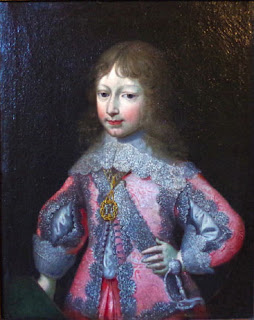Baroque designer influenced the look of ‘royal Turin’
 |
| Agostino Masucci's portrait of Filippo Juvarra |
Architect and stage set designer Filippo Juvarra was born on
this day in 1678 in Messina in Sicily.
Some of his best work can be seen in Turin today as he
worked for Victor Amadeus II of Savoy from 1714 onwards. The buildings Juvarra
designed for Turin made him famous and he was subsequently invited to work in
Portugal, Spain, London and Paris.
Juvarra was born into a family of goldsmiths and engravers
but moved to Rome in 1704 to study architecture with Carlo and Francesco
Fontana.
He was commissioned to design stage sets to begin with, but
in 1706 he won a contest to design the new sacristy at St Peter’s Basilica.
He then designed the small Antamoro Chapel for the church of
San Girolamo della Carità with his friend, the French sculptor, Pierre Le Gros.
He was later to design the main altar for the Duomo in Bergamo in Lombardy.
One of his masterpieces was the Basilica of Superga, built
in 1731 on a mountain overlooking the city of Turin, which later became a
mausoleum for the Savoy family.
 |
| The magnificent Basilica of Superga overlooking Turin is considered to be Juvarra's masterpiece |
It was said to have taken 14 years to flatten the mountain
top and it was very costly to bring the stones and other supplies to the peak
for the build.
As chief court architect, Juvarra
designed many other churches in Turin, the Palace of Stupinigi, built as the
royal hunting lodge outside Turin, and the façade of the Palazzo Madama in the
royal centre of the city. His later works are among the finest examples of the
early Rococo style in Italy.
The architect moved to Madrid to supervise the construction
of a new palace for Philip V and he designed other buildings for the city, but
he died in 1736 less than nine months after arriving in Spain.
His designs were all executed after his death by his pupils
and they strongly influenced the work of the other architects who came after
him.
 |
| The waterfront at Messina, with the colossal church of Christ the King dominating the scene |
Travel tip:
Messina, where Juvarra was born, is a city in northeast
Sicily, separated from mainland Italy by the Strait of Messina. It is the third
largest city on the island of Sicily and is home to a large Greek-speaking
community. The 12th century cathedral in Messina has a bell tower which houses
one of the largest astronomical clocks in the world, built in 1933.
Travel tip:
The Basilica of Superga, designed by Juvarra overlooking
Turin, was tragically destined to be the site of an air disaster in 1949, when
a plane carrying the entire Torino football team crashed into a wall at the
back of the church, killing all 31 people on board.
More reading:
How Italy lost one of its greatest players in the Superga plane crash
Also on this day:
1481: The birth of architect and painter Baldassare Peruzzi
1785: The birth of novelist Alessandro Manzoni
1785: The birth of novelist Alessandro Manzoni




